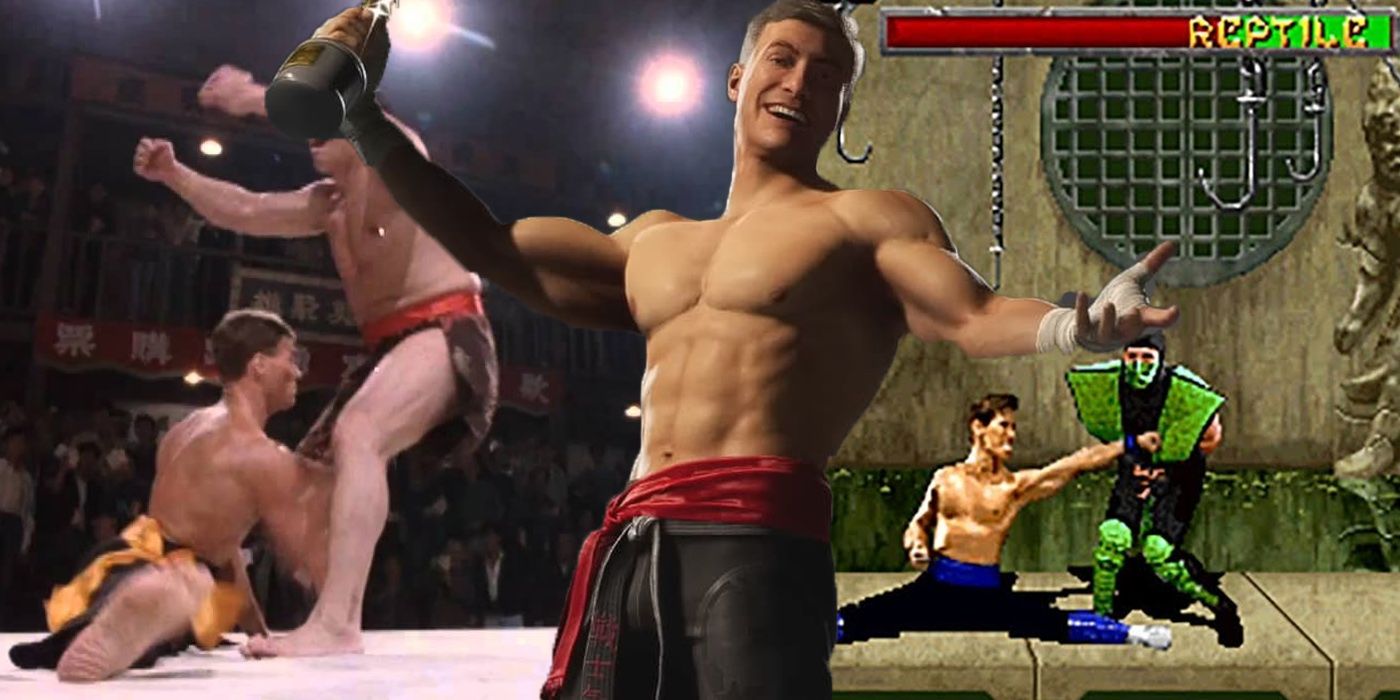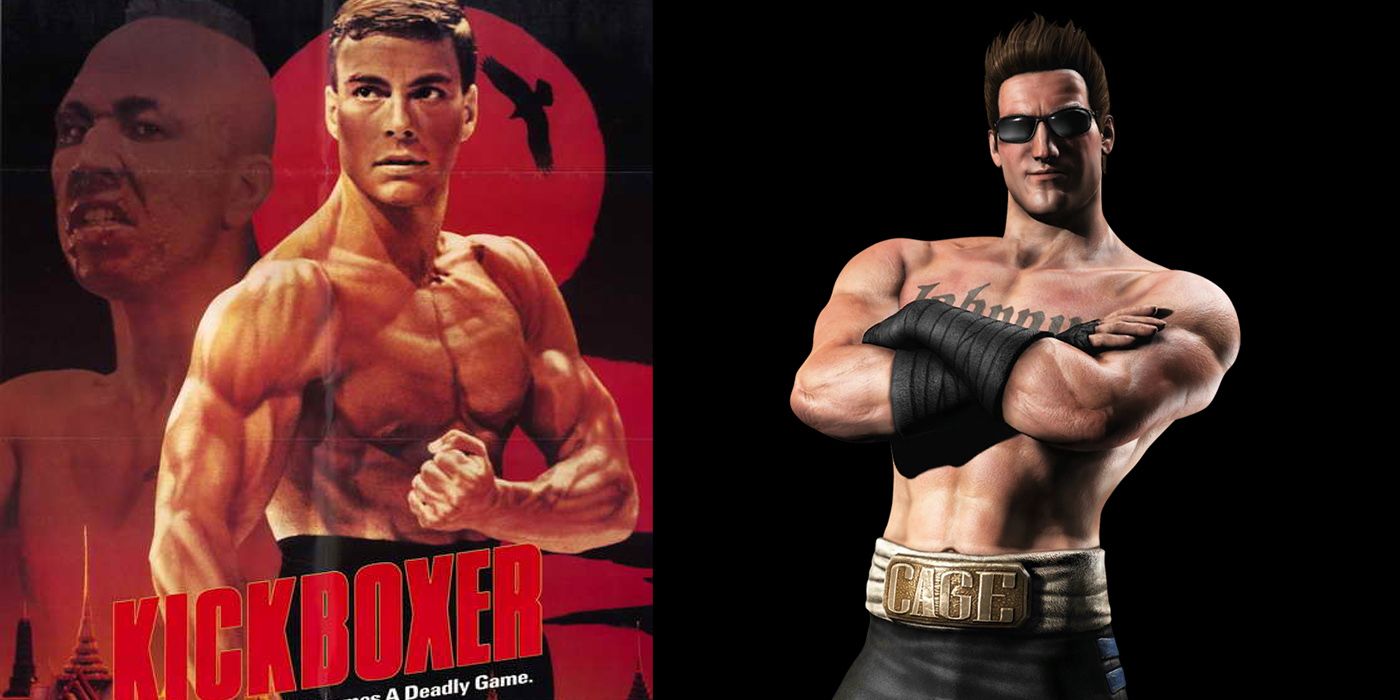Summary
- MK1 is a reboot-sequel that introduces alternate versions of classic characters like Johnny Cage. The DLC skin for Johnny turning him into Van Damme references the origins of the franchise.
- Mortal Kombat's original concept revolved around a game starring Van Damme, but it was reworked into Johnny Cage. Both Johnny and Liu Kang embody different perceptions of martial arts in pop culture.
- The inclusion of the Jean-Claude Van Damme skin for Johnny Cage highlights how Mortal Kombat has evolved and grown as a franchise, while also paying homage to its roots in old-school violence. The DLC is a fun gesture for fans.
MK1 is simultaneously a reboot and a sequel, pitting classic characters against alternate versions of themselves. In the spirit of examining alternate timelines, the first DLC for the game includes a new skin for Johnny Cage that turns him into Jean-Claude Van Damme. What seems at a glance like a silly nod to Johnny's Hollywood action-hero status, the skin is actually a much deeper reference to the origins of the franchise.
Mortal Kombat landed in arcades in 1992 and swept through home consoles like wildfire the following year, quickly becoming the standard against which all fighting games were and currently are measured. While the core idea of a gritty ultra-violent martial arts tournament continues to drive the franchise, Mortal Kombat’s title, protagonist, and overall vibe were almost very different. The original concept for the game centered around one martial artist in particular, who had released several instant cult-classic in the years immediately prior, during, and after MK’s release. Enter Van Damme.
Midway was initially intent on capitalizing on the popularity of Bloodsport, Kickboxer, and the blooming tradition of American pop-culture interest in martial arts movies when they set out to design a new kind of fighting game. Early concepts sought to adapt one of JCVD’s films, but the clearest pitch was simply titled “Van Damme.” Co-creator Ed Boon went as far as compiling demo reels to show a taste of what it might be like to see the Muscles from Brussels in-game, but for one reason or another Jean-Claude and/or his people turned Midway down.
Not wanting to scrap an idea with such potential for fun and mayhem, Ed Boon and John Tobias pressed on and, along with teams of talented artists, writers, and actors, constructed the multiverse fans saw unveiled in MK1. Where Jean-Claude would’ve been the protagonist, his character was reworked into Johnny Cage, a Hollywood big-shot who thinks he’s too cool for school. With timelines resetting and emerging, Jean-Claude’s role as a DLC skin for Johnny Cage brings the franchise full circle.
Klassic Fighters, Famous Inspirations
Where the proposed Van Damme game would’ve starred the titular fighter, Mortal Kombat usually sets Liu Kang as the main character. He’s the greatest fighter in all of Earthrealm, while Johnny serves as an example of someone with immense power and no responsibility. Johnny and Liu Kang are foils of one another, designed to illustrate each other’s strengths and weaknesses. While Johnny is made to be goofy and funny, Liu Kang is made to be user-friendly and thus very powerful. When one considers the original inspiration for Liu Kang, the connection between JCVD becomes more obvious and visible throughout the entire franchise.
Liu Kang has always been directly inspired by Bruce Lee. The fighter's name is a reference to Gordon Liu, who played San Te in the legendary kung fu film The 36th Chamber of Shaolin — a film that would not be what it was without Lee's influence. Where that movie connected fans of action and fantasy and simultaneously spawned a new era of hip-hop, Mortal Kombat did the same for gaming. Bruce Lee’s influence is more visible now than ever, as Liu Kang’s level-headed openness and appreciation for the minute beauty in all things are drawn from the public perception of Bruce Lee.
Where Lee’s films focus heavily on martial artistry and honor, Jean-Claude’s were bloodier action-based romps better suited for popcorn and cheap thrills. The two leading men of Mortal Kombat have embodied two poles of pop culture’s perception of martial arts for over thirty years, and Johnny's new look makes it all seem intentional.
An Ever-Changing Kast of Kharacters
Of course, plenty of characters in the franchise across the rosters of over twelve games aren’t currently anything like their original concept. Reptile was a secret sub-boss who turned into a staple playable character. Ermac, a collection of souls and creation of the evil Shang Tsung, started as a pre-internet rumor throughout arcades about a secret fighter hidden in the game’s code under the name Error Macro.
Jax, a close friend of Johnny’s and part of his team, was originally named Stryker, a name later given to an entirely separate character who leaned more into military/law-enforcement themes. Carl Weathers’ take on the cyber-armed brawler in MKX fit Jax’s character so well because Weathers is from that late 80s/early 90s fighting/action movie era, starring in Rocky and Predator, the latter being, coincidentally, another project intended for JCVD.
Bringing Jean-Claude in to finally play Johnny is the same vibe as finally making Ermac a legitimate character people could find under very specific conditions. It was fun to talk about when it was just a weird little factoid or rumor, but now that it’s actually real it just feels right. Johnny has been doing splits and punching pelvis for decades, so to see that stolen moveset performed by its originator feels like a nod to all the little tricky things developers did to make sure their fans knew they’d heard them. Like all things in Mortal Kombat, the JCVD Johnny skin is simultaneously a neat little goof and an incredibly significant nod to the bones of the franchise, and an affirmation of its future.
Johnny's Jean-Claude Proves How Far MK Has Come
Jean-Claude’s particular brand of campy-ultraviolence is his own, as is Mortal Kombat’s, but they fit together well because they stem from the same era of pop culture. JCVD’s films celebrate the sheer radness of hand-to-hand combat and aren’t particularly concerned with real-world ramifications or rules. Mortal Kombat is famed for brutal fatalities that ultimately only exist because they look cool since it’s clear that none of these characters will ever stay dead. Much like the action, fighting, and kung fu movie genres, Mortal Kombat occupies a particular niche in entertainment that’ll probably never go away.
Each new installment improves on game mechanics and continues to weave an increasingly abstract epic about a struggle for power across time and space. What was once intended as a beat-em-up featuring a notably eccentric action hero has run so far from that original idea that it’s seemingly come full circle. Jean-Claude’s involvement at this stage in MK’s evolution serves to highlight how big the franchise has gotten since it propelled the fighting game genre to new heights.
The DLC skin is a nod to what could have been, but in a way that shows why the version fans got and have been getting for thirty years is richer and fuller. It highlights how the franchise and fighting games, in general, have grown and changed alongside American pop culture's views and understanding of martial arts, balancing the immense time, effort, and care that goes into coherently constructing a multiverse around characters' personalities and skills with something outright silly and cool. Like almost everything else in Mortal Kombat, it’s great because it’s a nice gesture for fans, calling back to the franchise’s roots in old-school violence, but perhaps most importantly: it’s fun.




